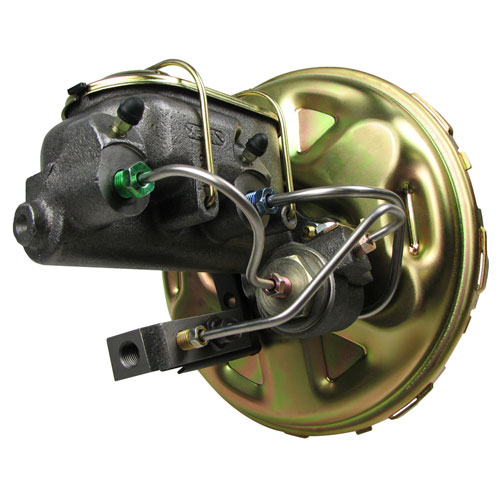
BRAKE POWER BOOSTER TROUBLESHOOTING MANUAL
Refer to a repair manual for the proper bleeding procedure.ĭo note that ABS systems can be tricky to bleed. The brake system needs to be bled after this procedure. Many master cylinders can be replaced by unbolting the master cylinder from the firewall, disconnecting the brake lines, and reinstalling the new unit. However, it is a job that requires you to have a good amount of automotive repair experience or else you may make things worse. If you were to be knowledgeable in vehicles and braking systems, then you would be able to save a fortune on the labor costs by doing it yourself. But the biggest expense of the replacement job will be in the labor costs, which are around $230 to $300.

The cost of the part itself will only be around $100 to $210. If you have a brake master cylinder that goes bad, the average cost to replace the cylinder will be between $320 and $500. We recommend Parts Geek for the best prices and selection. If you notice uneven braking, uneven pad wear, or your car pulls to one side when braking, your brake master cylinder could be at fault. For instance, the front right side and the rear left side would be worn down more than the front left and rear right.Ī failure of one of the piston seals in the master cylinder or a brake line leak could cause one circuit to fail. 7) Uneven Brake Pad WearĬaused by a failed circuit, if only two out of four wheels are able to apply the brakes, you will notice uneven pad wear. This will be most apparent when you brake really hard, as the front brakes do more work to stop the vehicle than the rear brakes. If one circuit has failed, you may notice the vehicle pull to one side under braking. For example, the front left and rear right wheels may share a circuit, while the front right and rear left wheels share a separate circuit.

Often these circuits will control one front wheel and the opposite rear wheel. This is to prevent a total loss of braking if there were to be a leak in one side of the system. Read also: 5 Symptoms of a Bad CV Joint and Replacement Cost 6) Bad Brake Biasīrake master cylinders often contain two separate circuits that separate brake fluid to the wheels in pairs. This could become a real driving hazard, so you’ll want to fix the brake master cylinder right away at this point. Instead, it will slowly sink to the floor. 5) Sinking Brake Pedalįollowing all these other symptoms, you will start noticing the brake pedal not returning to the top after you’ve removed your foot from it. You’d probably end up pressing down harder on the pedal just to get the vehicle to slow down like normal. If this were to happen, the brake pressure would not be as strong as you step on the brake pedal. The seals not only help keep the brake fluid from coming out, they also prevent dirt and debris from mixing with the brake fluid. 4) Contaminated Brake FluidĪnother problem that could happen as a result of worn out rubber seals is contamination in the brake fluid. The result of this would be a spongy feeling in the brake pedal. If these rubber seals were to get worn out or damaged, then there’d be an internal brake fluid leak. The cylinder contains rubber seals which keep the brake fluid inside of it. When the brake pedal starts to feel spongy as you place pressure on it with your foot, this will automatically be a sign that your brake master cylinder may be having issues. You would need to replace the brake master cylinder in this situation. This will impair your ability to slow down the vehicle. If the brake master cylinder is leaking braking fluid or if there are unsecured reservoirs on the cylinder which are holding the fluid, then you will almost be guaranteed of having a low brake fluid level. The brake master cylinder needs a certain level of brake fluid to create the hydraulic pressure necessary for slowing down the vehicle. If the ABS light comes on, the root cause could be the brake master cylinder, especially if the master cylinder is leaking fluid.

This will result in the warning light coming on. This indicates that there is some kind of problem with the braking system, but it might not necessarily mean that the brake master cylinder is at fault.īut if the braking system sensors detect the brake fluid pressure is dropping, it will likely be due to a bad brake master cylinder. The first symptom that is the easiest to notice is when the Brake Warning Light illuminates on the dashboard. Below are the top symptoms of a bad brake master cylinder that you will surely notice. It is very dangerous to drive without brakes that work properly. If you suspect an issue with your brake master cylinder, you should address the problem immediately. Once the brake master cylinder starts to go bad, there will be certain noticeable symptoms that will arise.


 0 kommentar(er)
0 kommentar(er)
